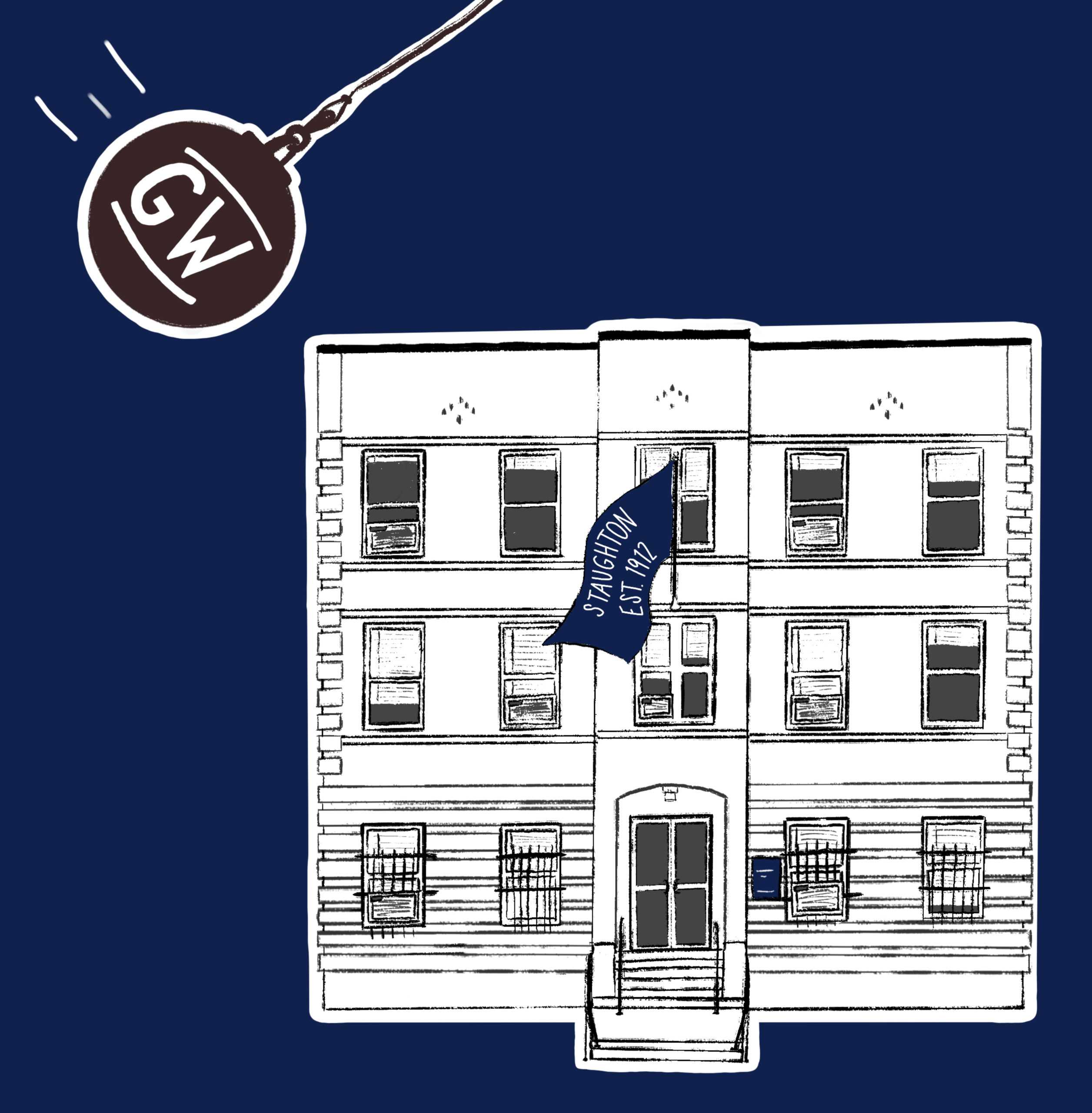The nondescript, three-story apartment building wedged between Gelman Library and the EMeRG building on 22nd Street is easy to miss. But Staughton Hall, home to World War II servicemen, Navy nurses, a women-only residence hall and government research projects over its lifetime, is a quiet yet notable part of the University’s history.
Despite its contributions to the history, architecture and character of the area, the University area’s historic district neither includes nor protects the vacant Staughton, and the building faces demolition in the coming months. This isn’t the University’s first time demolishing a historic structure and likely won’t be its last. Buildings that fail to meet questionable historic designations risk ending up in the rubbish heap alongside the University’s own history. The demolition of Staughton underscores the need for officials and students to preserve, protect and display the University’s history for posterity.
The locally and federally recognized historic district is a collection of about 100 University and privately owned buildings ranging from pre-Civil War structures to Victorian row houses and Art Deco apartment towers. The University included a proposal to create a historic district in the area in its 2007 Foggy Bottom Campus Plan. After review, D.C.’s Historic Review Preservation Board approved the George Washington University and Old West End historic district in 2014. The irregularly shaped district stretches from I to F streets heading north-south and 20th to 22nd streets heading east-west, occasionally jutting out to include individual buildings on its boundaries.

Maura Kelly-Yuoh | Cartoonist
The University also successfully applied to add the historic district to the National Park Service’s National Register of Historic Places, giving it federal recognition. Corcoran Hall, Lisner Auditorium, Strong Hall and five other buildings have been independently admitted to the National Register of Historic Places. These structures are especially representative of the neighborhood’s architectural styles and important to both Foggy Bottom and the University’s history.
While these overlapping city and federal historic areas recognize the historic value of the area and individual buildings, D.C.’s designation regulates the ability of individual property owners and the University to modify buildings within the historic district. D.C.’s preservation laws and design guidelines “safeguard the city’s historic and cultural heritage” and “foster civic pride in the accomplishments of the past.”
Yet these guidelines have a glaring flaw: they only apply to buildings within the historic district. The boundaries of the designated historic area exclude structures that are arguably historic but arbitrarily fail to contribute enough to the area’s history. These exceptions leave structures, like the former Nashman Center for Civic Engagement and Public Service building, vulnerable to demolition.
Beyond simply being old, the architectural style and roles these buildings inhabited are fundamentally important to the area and University’s history. Staughton’s characteristic design and varied uses should have made its historic status assured and its demolition nearly impossible.
Built as the Madeira apartment building in 1912, the University acquired Staughton in 1942. It housed servicemen during World War II before opening as the University’s second women’s residence hall in 1943. After 1951, it housed independent U.S. Army psychological research and Office of Naval Research logistics projects. Staughton’s affiliation with the U.S. military made it the site of anti-Vietnam War protests in 1970. The University moved its engineering administrative offices and other science and engineering programs there in 1976 and 1986, respectively.
That so little information about Staughton is readily available makes justifying its preservation all that much harder. Knowing the building’s history is essential to advocate for its continued existence. Yet this catalog of Staughton’s history came not from the University but the Foggy Bottom Association, a local community group. Despite being part of the University for nearly 80 years, it appears there is little institutional regard for the understated legacy of Staughton.
Though the most meaningful solution, the complex process of expanding the historic district is unlikely due to the time and cost involved. In the immediate future, the University could reverse course and salvage Staughton, finding it a new purpose and incorporating it into another structure like “The Seven Buildings” beneath the Mexican Embassy on Pennsylvania Avenue. Or like with District House, which is within the historic district, new construction could preserve the original facade of the building.
Staughton’s loss can still be a lesson, though. Following the FBA’s example, administrators and students should commit to a broad program of historic preservation. They can begin by creating an easily accessible, streamlined digital record of the Foggy Bottom Campus and West End area. Both the University and Foggy Bottom Association have digitally published some information and archival material on their own, but the University can go further by bringing its resources to bear. An initiative to publicly document historic information about the hundreds of buildings that make up the neighborhood – both old and new, visually stimulating and architecturally dull – is a tangible program in line with the University’s stated value of service.
No amount of nebulously defined green space or bronze plaques can make up for the loss of truly historic buildings. But a collaborative approach that engages local stakeholders for the benefit of the entire Foggy Bottom community is a great place to start.
Because if, or when, the University reaches its tricentennial, students and residents alike ought to enjoy beautifully preserved remnants of the neighborhood’s past – not mourn their loss.
Ethan Benn, a sophomore majoring in journalism and mass communication, is an opinions writer.

